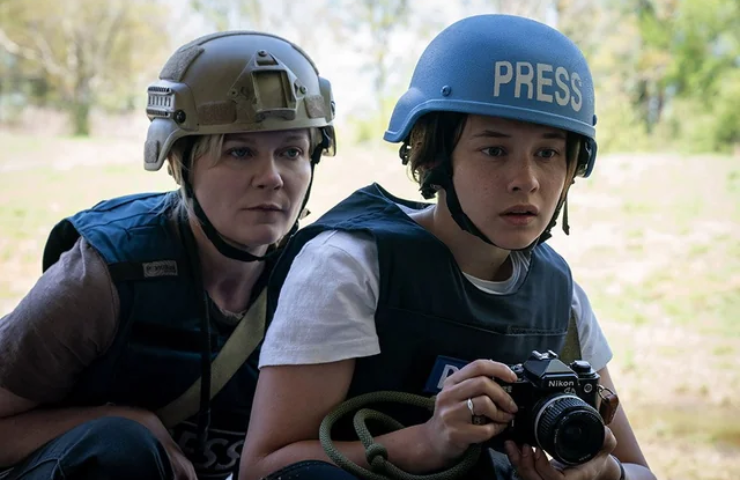“Civil War” came out during a tense election period in America, emphasizing the reality of media integrity and the consequences of not holding leaders accountable. At the same time, the film serves as a recognition of war journalists, highlighting their often underappreciated and important work during times of conflict.
In the film directed by Alex Garland—an author, screenwriter and director—a fascist president decides he doesn’t want to leave the seat of power and takes steps to remain in the White House. He dissolves the FBI, and those who don’t align with his stance join forces to take him down.
Instead of relying on an overbearing score to manipulate emotions, Garland opts for sparse, ambient sounds that amplify the film’s tension. This approach mirrors the hollow silence of conflict zones, where the absence of noise can be just as frightening as the chaos of battle.
The cinematography of the film reflects the feel of actual combat, using a DJI Ronin 4D. The film accurately depicts the photojournalists covering the war, showing how they must put themselves in precarious positions to capture what’s happening, which Garland captures perfectly with the DJI Ronin 4D.
Garland also makes extensive use of chromatic aberration—a technique that involves color distortion to create an outline of unwanted color around objects. This artistic choice is more than a visual gimmick; it serves to externalize the psychological trauma experienced by Lee Smith, Kristen Dunst’s character.
By distorting the color palette, Garland visually represents the fragmentation of her mental state, using this technique to evoke the disorienting effects of PTSD. The color distortion becomes a visual metaphor for the blurring of reality and memory, echoing the fragmented nature of trauma itself.
“Civil War” portrays a fictional war that arises from a fascist president’s actions. A team of war journalists on a courageous journey from the eerily depopulated New York to Washington, D.C., aims to interview the president as the nation spirals into chaos. It conveys the often unacknowledged profession of news reporting through this turmoil, as the team faces rooftop snipers, suicide bombers, and wild-eyed randos in the wilderness.
The character of Lee delivers a line that encapsulates the movie’s thesis: “Every time I survived a war zone, I thought I was sending a warning home: ‘Don’t do this.’ But here we are.” This line resonates as a stark reminder of the consequences of division and conflict. It also draws on the addictive nature of danger and power.
One of the most chilling sequences features Jesse Plemons as a murderous psychopath, questioning the concept of patriotism with the line, “What kind of an American are you?” These moments underscore the film’s exploration of nationalism, racism and the allure of power during wartime.
Unlike many Hollywood films that attempt to offer a glimmer of hope or a neatly wrapped conclusion, “Civil War” refuses to do so.
It presents an uncompromising view of a nation in turmoil, suggesting that sometimes there is no possibility of a happy ending. Garland’s film leaves the audience with the chilling reality that some conflicts, once ignited, leave behind scars too deep for redemption.





Recent Comments